Over the years, it is no secret that Americans have generally excelled on faster surfaces, so it comes as no surprise that the majority of them prefer to grind on hard courts as opposed to the clay, where the ball bounces relatively higher and comparatively slower to other surfaces. It’s for this reason that it’s not often one hears of an American who would rather play on the dirt, or would like a prolongation of the clay court season. But when a player with this mindset comes along, it is incredibly refreshing.
Meet Louisa Chirico. The 20-year-old is currently one of the United States’ brightest prospects and sits at a career-high ranking of number 70 in the world, thanks to a breakthrough clay season highlighted by a semifinal showing at the Mutua Madrid Open, a tournament she didn’t even realize she could qualify for until the day before she arrived in the Spanish capital.
Love At First Sight: The Beginning of Chirico’s Love for the Game
Raised in Westchester, New York, Chirico played a number of sports as a child, but it wasn’t until she got older that she decided to focus her talents on two vastly different sports: soccer and tennis, before choosing to pursue a career in the latter.
“The way I got started with tennis was that one day my mom signed me up for a tennis clinic,” she recalled. “From then on, I fell in love with the sport and always played. As I got older, I stopped playing other sports and decided to focus on tennis. I officially decided to play professional when I was 17, but really have always dreamt of playing tennis at the professional level.”
The Story Behind Chirico’s Adoration for the Clay
Growing up on green clay, a slightly faster version of the traditional European red clay, it comes as no surprise that the American’s comfort on the dirt comes from the countless hours she’s spent training on the clay, thus allowing the movement on clay to come more naturally when transitioning from the vastly different North American hard courts.
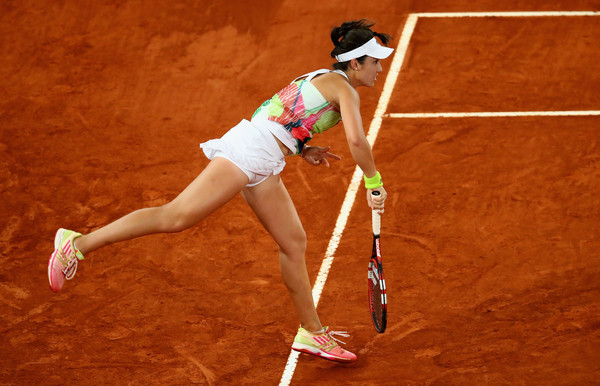
“Since I could remember, clay has always been a favourite surface of mine,” she said. “I enjoy the clay season due to the fact that I know I am comfortable transitioning from the hard courts to clay. A lot of players have a tough time getting adjusted to the clay, but for some reason, I am able to do it and feel confident about my level of play.”
“I also think the clay suits my physical game style and allows me to wear down my opponents,” she continued. “Growing up on the surface definitely helped me because the movement on clay comes naturally to me, and I know a lot of players struggle with it.”
A Magical Week at the “Magic Box”
Going back to her biggest professional breakthrough this past May, Chirico was never even expected to play at the Caja Magica because she had entered an ITF event the week of Madrid, as a result of never having made the cut for the qualifying draw. But as more and more players began to withdraw, the American soon realized she had a chance of competing after all, and promptly jetted off to Madrid from Prague, where she had been training for the last couple of days. However, it wasn’t until the day before the first ball was struck that Chirico realized she was eligible to compete.
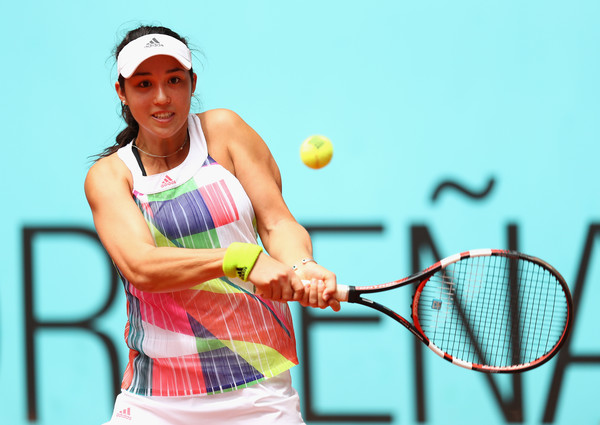
Making the most of her opportunities, Chirico qualified without dropping a set and continued this stellar form all the way to the semifinals, earning victories over the likes of Daria Gavrilova and Ana Ivanovic along the way, before falling in straight sets to a resurgent Dominika Cibulkova.
“Madrid will always hold a special place in my heart,” she said. “The venue and atmosphere is second to none. After not knowing if I was going to get in the tournament to then beat some great players along the way, I was fortunate to make the most of my opportunity.”
Hello, World: Chirico’s First Major Breakthrough
But let’s backtrack to this time last year when a then-19-year-old Chirico made her first major breakthrough at the Citi Open. A wildcard entrant into the main draw, the teenager stormed past Heather Watson at the loss of just three games, before edging out Alizé Cornet in a third-set tiebreak, thus claiming one of the biggest wins of her career. Though she would ultimately fall in the last eight to eventual champion Sloane Stephens, this marked the starting point of a major spike in confidence for Chirico and was a clear indication that her countless hours of hard work were finally beginning to pay off.
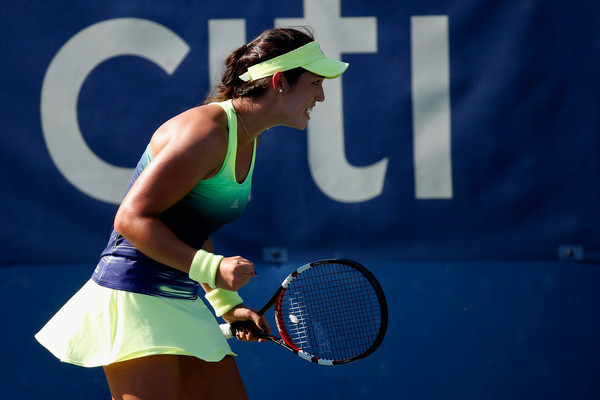
“Reaching the quarterfinals of the 2015 Citi Open was extremely helpful to my confidence,” Chirico said. “It showed me that I was ready to compete with the best players week in and week out. That confidence helped carry me through the remainder of 2015 and into 2016.”
“At this time last year, I always believed in myself to break into the top 100 and was enjoying the process of working my way up the WTA ladder,” she continued. “I am grateful that I have been able to break through so quickly. I hope to continue to rise the rankings.”
How Chirico Balanced the Books with the Ball
At the age of 20, most of Chirico’s friends have successfully completed their second year of post-secondary education, whereas the WTA Rising Star is midway through the third year of her professional career. However, that goes without saying that the American strongly valued her education in her formative years, wisely prioritizing it before choosing to hit the court.

“Growing up, school was a priority,” said the American. “I have always been studious and would play tennis after I did my school work. It was just a habit that I got used to and was able to manage as my commitment to tennis increased. There were times where it was hard to balance but I think it helped me become a more well-rounded person.”
Chirico Talks Biggest Difference Between Juniors to Pros, Unwinding on the Road
Once a successful junior who got as high as number six in the world, Chirico’s transition to the “big leagues” certainly hasn’t come easy, and there have been a few major differences that she’s noticed with every match, both win or lose. “To me, one of the biggest differences from the juniors to the WTA tour is physicality,” she remarked.
“Week in and week out, you have to be prepared mentally and physically to compete at the highest level.”
“I also think the pros are much better at doing all of the basic things day in and day out. They take care of the little things and don’t really leave any holes in their games.”
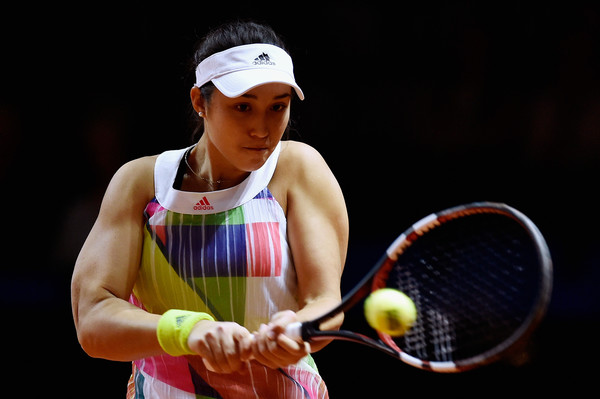
It is no secret that life as a professional athlete is one of the most physically and emotionally demanding professions one can ever take on, so it comes as no surprise that athletes have many things to clear their mind in order to find a balance between their job and their personal lives. “On the road, I love to relax and hang out,” the 20-year-old noted for herself. “Whether that is going out to dinner with friends on tour, watching movies/TV shows or reading. That is mainly how I unwind.”
Chirico’s Greatest Influence?
For any athlete, the importance of a healthy support system cannot be stressed enough in a profession that requires great sacrifice, commitment, and patience in order to reach the upper echelons of the sport. Behind ever athlete lies an even greater inspiration that has influenced—and will continue to influence in—their road to further successes. For Chirico, her inspiration lies in a man she has been working with for almost half a decade now; someone she can trust, and someone who has really been through it all, while being by her side, professionally.
“My current coach, Jay Gooding, has had the biggest impact on my career,” she said. “He’s helped me check off all the boxes and has been with me through all the steps leading up to where I am now. I traveled to my first professional tournament with him, and he was there for my first ever title when I was 16.”
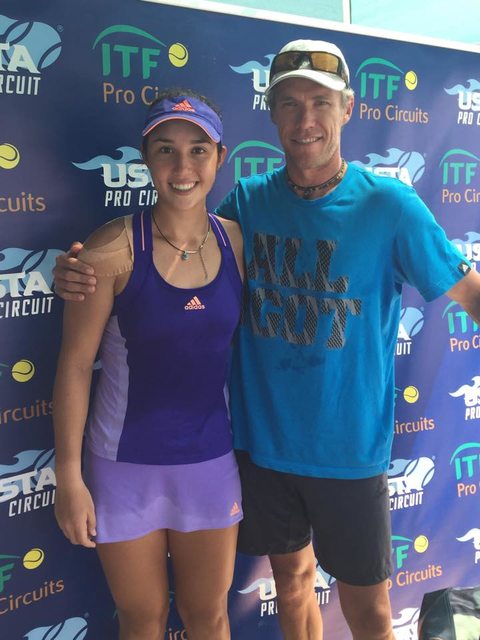
“In addition to the tactical and technical aspects of coaching, he’s also been a constant positive and motivational figure for me. He plays a huge role in shaping the process-oriented mindset that I believe has allowed me to play my best tennis. He’s helped me grow not only as a player but also as a person. We have a lot of fun together, and it’s nice to have someone who puts in the hours day in and day out with me, so we can share our success together.”
Chirico’s Goals for 2016, Beyond
With four months left of the season, Chirico’s sights are set on improving, in order to make the goals she has set reasonable, and attainable. “I want to continue to rise the rankings and improve my game each and every week. Hopefully, I will be able to make deep runs in tournaments and claim some titles.”
“My long-term goals would be to maximize my potential, reach number one, and win a slam.”
At the age of 20, Chirico is still incredibly young in her professional development and there is a lot to be done to attain the goals she’s been dreaming of since she first fell in love with the game. But when it’s all said and done, the American doesn’t want to be defined by just her accomplishments.
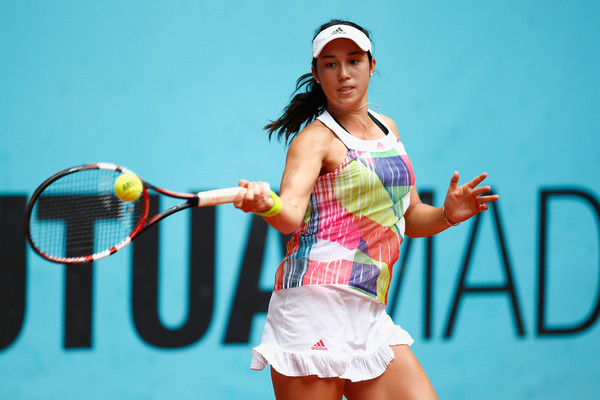
“I want to be known as a player who was honorable, competed hard, maximized her potential and consistently improved her game,” she said, when asked about what legacy she would like to leave on the game. “I hope that by accomplishing all of the above, my colleagues will respect my dedication to the game of tennis and hopefully will result in many tournament victories.”
While improvement may always be on the mind of Chirico, there is one thing that sets her apart from the rest of the next generation of Americans: her all-court game. While some may be perfectly content with battling it out from the back of the court, Chirico is not afraid to finish points off at the net, nor is she afraid to utilize slices and drop shots to change the rhythm of rallies. Paired with her booming serve and heavy ground strokes, Chirico’s game is the perfect, yet lethal combination of power, finesse, and spin, and one that can certainly catapult her to even bigger breakthroughs in a few years’ time.






































